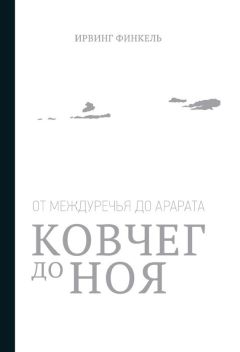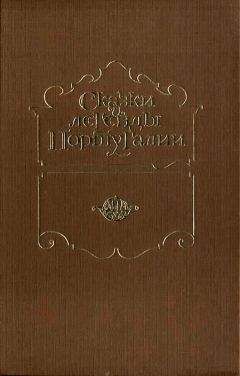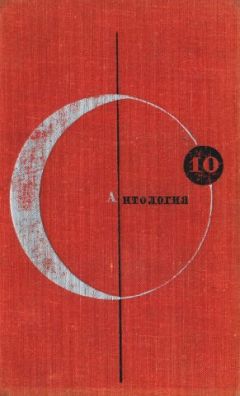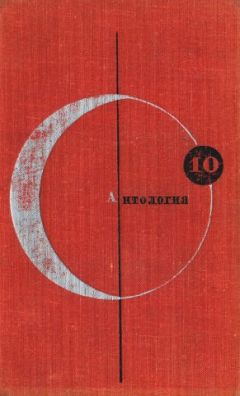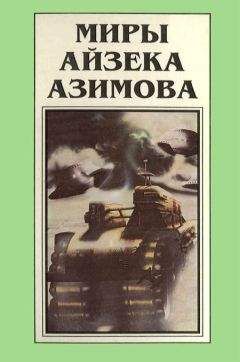• Livingstone, A., ‘Ashurbanipal: Literate or Not?’ ZeitschHft fur Assyriologie 97 (2007): 98-118.
• Lynche, R., An Historical Treatise of the Travels of Noah into Europe: Containing the fist inhabitation and peopling thereof. As also a breefe recapitulation of the Kings, Governors, and Rulers commanding in the same, even unto the fist buildingof Troy by Dardanus. Done into English by Richard Lynche, Gent. London, 1601.
• Malamat, A., ‘King Lists of the Old Babylonian Period and Biblical Genealogies’, in R. S. Hess and D. T. Tsumura (eds), ‘I Studied Inscriptions from Before the Flood’. Ancient Near Eastern, Literary and Linguistic Approaches to Genesis 1-11. Winona Lake, 1994: 183-99.
• Mallowan, M. E. L., ‘Noah’s Flood Reconsidered’, Iraq 26 (1964): 62–82.
• Marinkovi'c, P, ‘Urartu in der Bibel’, in S. Kroll, C. Gruber, U. Hellwag, M. Roaf and P Zimansky (eds), Biainili-Urartu. The Proceedings of the Symposium held in Munich 12–14 October 2007. Acta Iranica, Vol. 51. Louvain, 2012.
• Michalowski, P., ‘How to Read the Liver – in Sumerian’, in A. K. Guinan, M. de J. Ellis, A. J. Ferrara, S. M. Freedman, M. T. Rutz, L. Sassmannshausen, S. Tinney and M. W. Waters (eds), If a Man Builds a Joyful House: Assyriological Studies inHonorofErle Verdun Leichty. Leiden, 2006: 247-57.
• Millard, A. R., ‘A New Babylonian “Genesis” Story’, in Hess and Tsumura (eds), 1994: 114-28.
• Millard, A. R., ‘Transcriptions into Cuneiform’, in Geoffrey Khan (ed.), Encyclopedia of Hebrew Language and Linguistics, Vol. 3, 2013: 838-47.
• Montgomery, J. W., The Quest for Noah’s Ark. Minneapolis, 1972.
• Moorey, P R. S., Kish Excavations 1923–1933. Oxford, 1978.
• Nissen, H., P Damerow and R. K. Englund, Archaic Bookkeeping: Writing and Techniques of Economic Administration in the Ancient Near East. Trans. P Larsen. Chicago, 1993.
• Ochsenschlager, E. L., ‘Ethnographic Evidence for Wood, Boars, Bitumen and Reeds in Southern Iraq: Ethnoarchaeology at al-Hiba’, Bulletin on Sumerian Agriculture 6 (1992): 47–78.
• Ochsenschlager, E. L., Iraq’s Marsh Arabs in the Garden of Eden. Philadelphia, 2004.
• Oppenheim, A. L., The Interpretation of Dreams in the Ancient Near East with a Translation of an Assyrian Dream-Book. Transactions of the American Philosophical Society. New Series 46/3 (1956).
• Oppenheim, A. L., Letters from Mesopotamia: Official, Business and Private Letters on Clay Tablets from Two Millennia. Chicago, 1967.
• Oppenheim, A. L., ‘A Babylonian Diviner’s Manual’, Journal of Near Eastern Studies 33 (1974): 197–220.
• Oppenheim, A. L., Ancient Mesopotamia, revised edition. Chicago, 1977.
• Parpola, S. ‘A Letter from Samas-sum-ukin to Ašārhaddon’, Iraq 34 (1972): 21–34.
• Parpola, S., ‘The Murder of Sennacherib’, in B. Alster (ed.), Death in Mesopotamia. Papers read at the XXVIe Rencontre Assyriologique Internationale. Mesopotamia 8. Copenhagen, 1980: 171-86.
• Parpola, S., ‘The Assyrian Cabinet’, in M. Dietrich and O. Loretz (eds), Vom Alten Orient zum Alten Testament. Festschrift fur Wolfram Freiherrn von Soden. Alter Orient und Altes Testament 240. Neukirchen-Vluyn, 1995: 379–401.
• Parpola, S. and K. Watanabe, Neo-Assyrian Treaties and Loyalty Oaths. State Archives of Assyria 2. Helsinki, 1998.
• Parrot, A., The Flood and Noah’s Ark. Translated from the French by Edwin Hudson. Studies in Biblical Archaeology 1. London, 1955.
• Patai, R., The Children of Noah: Jewish Seafaring in Ancient Times. With Contributions by J. Hornell and J. M. Lundquist. Princeton, 1998.
• Peake, H., The Flood: New Light on an Old Story. London, 1930.
• Pedersen, O., Archive und Bibliotheken in Babylon: Die Tontafeln der Grabung Robert Koldeweys 1899–1917. Abhandlungen der deutschen Orient-Gesellschaft 25. Saarbrncken, 2005a.
• Pedersen, O., ‘Foreign Professionals in Babylon: Evidence from the Archive in the Palace of Nebuchadnezzar II’, in W. H. van Soldt (ed.), Ethnicity in Ancient Mesopotamia: Papers Read at the 48th Rencontre Assyriologique Internationale, Leiden, 1-4July 2002. Leiden, 2005b: 267-72.
• Peters,J. P., Nippur, or Explorations and Adventures on the Euphrates. The Narrative of the University of Pennsylvania Expedition to Babylonian in the Years 1888–1890, Vol. 1. Pennsylvania, 1899.
• Pinches, T. G., ‘EXIT GISTUBAR!’ The Babylonian and Oriental Record 4 (1889-90): 264.
• Pinches, T. G., ‘The Religious Ideas of the Babylonians’, Journal of the Transactions of the Victoria Institute 28 (1896): 1–3.
• Pingree, D., ‘Legacies in Astronomy and Celestial Omens’, in S. Dalley (ed.), The Legacy ofMesopotamia (1998): 125-37.
• Potts, D., Mesopotamian Civilization: The Material Foundations. London, 1997.
• Powell, M. A., ‘Timber Production in Prešārgonic Lagas’, in J. N. Postgate (ed.), Trees and Timber in Mesopotamia: Bulletin on Sumerian Agriculture, Vol. 6. Cambridge, 1992: 99-122.
• Raikes, R. L., ‘The Physical Evidence for Noah’s Flood’, Iraq 28 (1966): 62-3.
• Reade, J. E., ‘Archaeology and the Kuyunjik Archives’, in K. R. Veenhof (ed.), Cuneiform Archives and Libraries. Papers read at the 30e Rencontre Assyriologique Internationale Leiden, 4–8 July 1983. 1986.
• Reade,J. E., ‘An Eagle from the East’, BHtannia 30 (1999): 266-8.
• Reade, J. E., ‘Retrospect: Wallis Budge – For or Against?’ in Ismail 2011: 444-63.
• Riem, J., Die Sinflt in Sage und Wissenschaft. Hamburg, 1925.
• Robson, E., Mesopotamian Mathematics 2100–1600 bc: Technical Constants in Bureaucracy and Education. Oxford Editions of Cuneiform Texts, Vol. 24. Oxford, 1999.
• Robson, E., Mathematics in Ancient Iraq. Princeton, 2008
• Salim, S. M., Marsh Dwellers of the Euphrates Delta. London School of Economics Monographs on Social Anthropology no. 23. London, 1962.
• Salonen, A., Die Wasserfahrzeuge in Babylonien. Studia Orientalia, Edidit Societas Orientalis Fennica VIII.4. Helsinki, 1939.
• Sandars, N. K., The Epic of Gilgamesh. Penguin Books, 1960.
• Schnabel, P, Berossus und die babylonisch-hellenistische Literatur. Leipzig and Berlin, 1923.
• Shehata, D., Annotierte Bibliographie zum altbabylonische Atramhasis Mythos Inuma ilu awilum. Gottinger Arbeitshefte zur Altorientalischen Literatur, Vol. 3. Gottingen, 2001.
• Smith, G., ‘The Chaldean Account of the Deluge’, Transactions of the Society of Biblical Archaeology 2 (1873): 213-34.
• Smith, G., ‘The Eleventh Tablet of the Izdubar Legends: The Chaldean Account of the Deluge’, Transactions of the Society of Biblical Archaeology 3 (1874): 534-87.
• Smith, G., Assyrian Discoveries: An Account of Explorations and Discoveries on the Site of Nineveh during 1873 and 1874. London, 1875.
• Smith, G., The Chaldean Account of Genesis containing the Description of the Creation, the Fall of Man, the Deluge, the Tower of Babel, the Times of the Patriarchs, and Nimrod; Babylonian Fables and the Legends of the Gods; from the Cuneiform Inscriptions. London, 1876.
• Spar, I. and W. G. Lambert (eds), Cuneiform Texts in the Metropolitan Museum of Art, Vol. II. Literary and Scholastic Texts of the First Millennium B. C. New York, 2005.
• Speiser, E. A., ‘Southern Kurdistan in the Annals of Ashurnasirpal and Today’, Annals of the American Schools of Oriental Research 8 (1928, for 1926-7): 1-42.
• Stevens, E. S., By Tigris and Euphrates. London, 1923.
• Streck, M. P, ‘NiSIR’, Rleallexikon derAssyriologie9 7/8 (2001): 589-60.
• Thesiger, W., The Marsh Arabs. London, 1964.
• Tigay, J., The Evolution of the Gilgamesh Epic. Philadelphia, 1982.
• van Koppen, F., ‘The Scribe of the Flood Story and his Circle’, in K. Radner and E. Robson (eds), The Oxford Handbook of Cuneiform Culture. Oxford, 2011: 140-66.
• Velduis, N., ‘Levels of Literacy’, in K. Radner and E. Robson (eds), The Oxford Handbook ofCuneiform Culture. Oxford, 2001: 68–89.
• Watelin, L. C., Excavations at Kish, Vol. 4. Paris, 1934.
• Weidner, E. F, ‘Jojachin, Konig von Juda, in babylonischen Keilschrifttexten’, Melanges syriens offerts a Monsieur Bene Dussaud, Vol. 2. Bibliotheque Archeologique et Historique 30 (1939): 923-35.
• Westenholz, A., ‘The Graeco-Babyloniaca Once Again’, ZeitschHft fur Assyriologie und Vorderasiatische Archaologie97 (2007): 262–313.
• Westenholz, J. G., Legends of the Kings of Akkade: The Texts. Mesopotamian Civilizations 7. Winona Lake, 1997.
• Westermann, C., Genesis 1-11: A Continental Commentary. Trans. J. J. Scullion. Minneapolis, 1984.
• Weszeli, M., ‘Schiff und Boot. B. in Mesopotamischen Quellen des 2. und 1. Jahrtausends’, Beallexikon der Assyriologie 12. Berlin, 2009: 160-71.
• Wiggermann, F A. M., Mesopotamian Protective Spirits: The Ritual Texts. Cuneiform Monographs 1. Groningen, 1992.
• Wiggermann, F. A. M., ‘Agriculture as Civilization: Sages, Farmers and Barbarians’, in K. Radner and E. Robson (eds), The Oxford Handbook of Cuneiform Culture. Oxford, 2011: 663-89.
• Wilcke, C., Wer las und schHeb in Babylonien und AssyHen. Sitzungberichte der Bayersichen Akademie der Wissenschaften Philosophisch-historische Klasse 200/6. Munich, 2000.
• Wilcke, C., The Sumerian Poem Enmerkar and En-suhkes-ana: Epic, Play, Or? Stage Craft at the Turn from the Third to the Second Millennium B. C. with a Score-Edition and a Translation of the Text. American Oriental Series Essay 12. New Haven, 2012.
• Wilson, I., Before the Flood: Understanding the Biblical Flood Story as Recalling a Beal-Life Event. London, 2001.
• Wilson, R. R., ‘The Old Testament Genealogies in Recent Research’, in R. S. Hess and D. T. Tsumura (eds), ‘I Studied Inscriptions from before the Flood’. Ancient Near Eastern, Literary and Linguistic Approaches to Genesis 1-11. Winona Lake, 1994: 200-23.
• Woolley, C. L., Excavations at Ur. London.
• Young, G. and N. Wheeler, Return to the Marshes. London, 1977. Zaccagnini, C., ‘Maps of the World’, in G. B. Lanfranchi, D. M. Bonacossi, C. Pappi and S. Ponchia, Leggo! Studies Presented to Frederick Mario Fates on the Occasion of His 65th Birthday. Wiesbaden, 2012: 865-73. Zarins, J., ‘Magan Shipbuilders at the Ur III Lagash State Dockyards (2062–2025 B. C.)’, in E. Olijdam and R. H. Spoor (eds), Intercultural Relations between South and Southwest Asia: Studies in Commemoration of E. C. L. DuHng Caspers (1934–1996). BAR International Series 1826. 2008: 209-29.
• Zgoll, A., Traum und Welterleben im antiken Mesopotamien. Alter Orient und Altes Testament 333. Mdnster, 2006.
• Ziolkowski, T., Gilgamesh Among Us: Modern Encounters with the Ancient Epic. Cornell, 2011.
• M. A. S. Abdel Haleem: отрывки из Нового перевода Корана (The (Quran. A New Translation, Oxford World’s Classics, 2004). В русском издании Коран цитируется в переводе И. Ю. Крачковского.
• Andrew George (переводчик): отрывки из Эпоса о Гильгамеше (TheEpic of Gilgamesh, Allen Lane The Penguin Press, 1999), цитируются с разрешения переводчика и издательства Penguin Books Ltd. В русском издании аккадский Эпос о Гильгамеше дан в переводе В. В. Емельянова. James Hornell: цитаты из книги Водный транспорт в древности: Возникновение и первые усовершенствования (Water Transport: Origins & Early Evolution, Cambridge University Press, 1946), цитируются с разрешения издательства. В русском издании эти цитаты даны в переводе К. М. Великанова.
• W. G. Lambert & A. R. Millard: цитаты из книги Атрахасис: Вавилонская история о Потопе (Atra-Hasis: The Babylonian Story of the Flood, Oxford University Press, 1969), цитируются с разрешения издательства Eisenbrauns. В русском издании цитаты из эпоса об Атрахасисе приводятся в переводе с аккадского В. В. Емельянова, сделанном по указанному изданию.
• L. Oppenheim: цитата из статьи «A Babylonian Diviner’s Manual» в Journal of Near Eastern Studies 33: 197–220 (University of Chicago, 1974). В русском издании эта цитата приводится в переводе с аккадского В. В. Емельянова, сделанном по указанному изданию.
• В русском издании цитаты из книг Ветхого Завета даны в новом переводе Российского Библейского Общества (РБО) «Библия. Современный русский перевод».
Издательства Hodder & Stoughton и «Олимп-Бизнес» приложили максимум усилий, чтобы связаться с обладателями прав на каждое процитированное в книге издание и получить соответствующие разрешения. Издательство «Олимп-Бизнес» готово при первой же возможности исправить ошибки и внести нужные изменения, если будут получены дополнительные сведения о чьих-то авторских или издательских правах.
